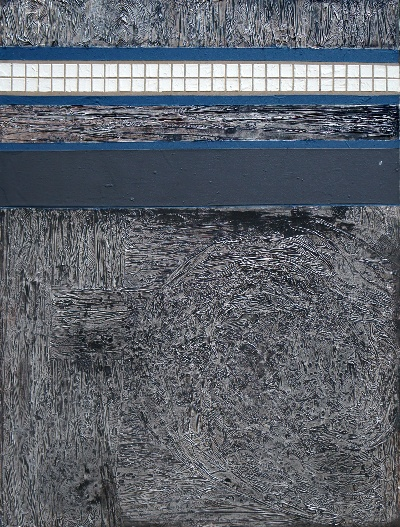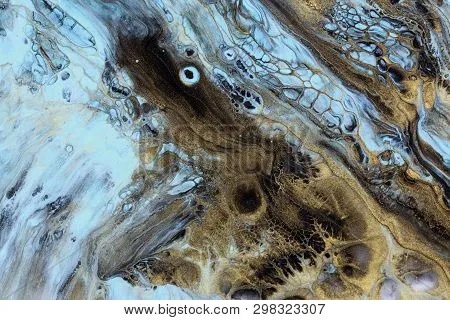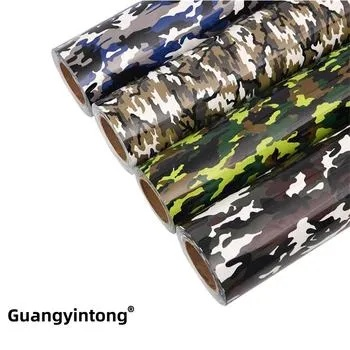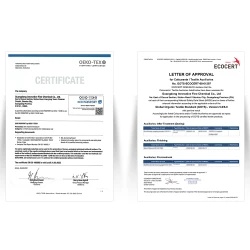Transforming Textiles with Acrylic Painting Techniques
"Acrylic painting techniques have been successfully applied to transform textiles, creating unique patterns and textures. By incorporating acrylic paint into the fabric, artists can create vibrant and detailed designs that are visually stunning. This technique not only enhances the aesthetic appeal of textiles but also adds durability to the fabric, allowing it to withstand wear and tear. Acrylic painting is an innovative and creative way to transform textiles, providing endless possibilities for artists and designers alike."

In the realm of textile design, the use of acrylic paints has become increasingly popular due to their durability, affordability, and ease of application. With a little knowledge about how these paints work, you can turn your favorite fabrics into works of art that will not only be visually stunning but also functional. In this guide, we'll explore the different ways acrylic paintings can enhance textiles from simple monochromatic designs to complex multicolored patterns. Let's dive into the world of textile acrylic painting and discover the endless possibilities it offers.
Firstly, let's start by discussing some of the basic principles behind acrylic painting on textiles. Acrylic paint is a water-based medium that dries quickly and provides excellent coverage. When applied with precision, it allows for intricate details to be painted on even the most delicate fabrics. The pigments used in acrylic paint are highly versatile and can be mixed to achieve a wide range of colors. This means that you can create anything from pastel shades to bold, vibrant hues, depending on your desired outcome.
One of the key benefits of using acrylic paints on textiles is that they resist fading and wear better than other types of paint. Unlike oil-based paints, which can fade over time and show through fabric, acrylic paints adhere well and provide long-lasting results. This makes them ideal for applications such as home decor, fashion accessories, or even clothing. Additionally, acrylic paints are non-toxic, making them safe for use around children and pets.
Now, let's look at some practical tips for achieving great results with acrylic painting on textiles. First and foremost, it's important to choose the right acrylic paint for your project. Different paints have different levels of coverage, so it's essential to select one that matches the size and complexity of your design. For example, if you're creating a large-scale piece, using a thicker consistency of paint will ensure that your design stands out. Similarly, if you're working on smaller details, a thinner paint may be more suitable.
Another crucial step is prepping the fabric for painting. It's important to remove any dirt, dust, or oils from the surface of the fabric before applying acrylic paint. You can do this by gently washing the fabric in warm water and soap or by treating it with an acid wash to remove any existing color. Once the fabric is clean, it's time to apply the paint. Start by lightly spritzing the fabric with water to help the paint stick, then apply the paint using a brush or palette knife. Be sure to follow the instructions provided by the paint manufacturer for best results.
Now, let's talk about the different techniques you can use to create textile acrylic paintings. One of the most popular methods is called "stenciling," where you apply the paint directly onto a template that you have printed onto the fabric. This technique creates precise patterns and shapes that can be repeated across several pieces of fabric. Another option is "dip painting," where you dip a cloth into the paint and apply it to the fabric in small strokes. This method allows for more control over the directionality of the paint and can be particularly effective for creating textured effects or adding highlights.
When it comes to selecting the perfect acrylic paint for textile projects, there are various factors to consider. The first is the color tone. Depending on the desired aesthetic, you might opt for pastel shades or bright, bold colors. Next, think about the finish you want to achieve. Some people prefer a matte finish, while others prefer a glossy sheen. Finally, consider how the finished product will be used; if it's for clothing, you'll want to choose colors that complement the garment's natural color palette.
To give you an idea of what kind of textile acrylic paintings are available, let's take a look at some examples. One famous textile artwork that incorporates acrylic paints is the "Vogue" dress designed by British artist Kate Macleod. This piece showcases a bold, geometric pattern made up of overlapping circles and triangles, created entirely with acrylic paint. Another example is the "Californian Summer" collection by American artist Sarah Simpson. These pieces feature whimsical floral motifs that are painted in a variety of sizes and colors using acrylic paints on cotton and linen fabrics.
As you can see, there are countless ways to transform everyday textiles into works of art using acrylic paints. Whether you're looking to create a bold statement piece or add subtle pops of color, the possibilities are truly limitless. So why not try your hand at it? Get creative with your designs, and who knows—you might just find yourself with a newfound appreciation for textile art!
纺织品手绘丙烯图案概述
纺织品手绘丙烯图案是一种独特的艺术形式,通过精湛的工艺和创意的设计,将抽象的图案转化为生动的视觉效果,这种图案不仅具有装饰性,还能为纺织品增添独特的风格和个性,我们将探讨纺织品手绘丙烯图案的制作过程、技巧以及实际应用。

制作纺织品手绘丙烯图案的材料与工具
制作纺织品手绘丙烯图案主要需要以下材料和工具:
- 纺织品:这是制作图案的基础材料,可以是各种质地和颜色的棉、丝、麻等天然纤维织物。
- 丙烯颜料:这是一种常用的颜料,具有色彩鲜艳、干燥快、易涂抹等特点。
- 画笔:用于精细绘制图案的工具。
- 画布:用于绘制图案的表面,可以是画布、木板等。
- 剪刀、针线等辅助工具:用于裁剪和缝制图案。
纺织品手绘丙烯图案的制作技巧
- 选择合适的图案:在选择图案时,需要考虑纺织品的材质、颜色、纹理等因素,选择合适的图案。
- 绘制基础线条:在绘制图案之前,需要先绘制出基本的线条,为后续的填充和细节处理打下基础。
- 色彩搭配:在绘制图案时,需要注意色彩的搭配和层次感,使整个图案看起来更加生动和有层次感。
- 精细绘制:使用精细的画笔和工具,对图案进行精细的绘制,确保图案的细节处理到位。
- 注意事项:在制作过程中,需要注意安全事项,避免颜料溅出或弄脏衣物等。
纺织品手绘丙烯图案的实际应用案例
某品牌服装的设计与制作
该品牌的一款服装采用了手绘丙烯图案作为装饰元素,设计师选择了鲜艳的色彩和生动的图案,将服装的时尚感和个性展现得淋漓尽致,在制作过程中,使用了高质量的丙烯颜料和画笔,精细绘制了服装的图案,使得整个服装看起来更加生动和有层次感,最终制成的服装受到了消费者的喜爱和好评。
纺织品手绘丙烯图案在家居装饰中的应用
纺织品手绘丙烯图案在家居装饰中也有广泛的应用,一些家居用品的设计师会使用手绘丙烯图案来装饰家居用品,使得家居用品看起来更加美观和个性化,纺织品手绘丙烯图案还可以用于制作窗帘、地毯等家居装饰品,为家居增添独特的风格和个性。
英文案例说明(表格形式)
以下是英文案例说明表格:
| 英文案例名称 | 材料与工具 | 制作过程 | 应用效果 | 注意事项 |
|---|---|---|---|---|
| 服装设计案例 | 纺织品:天然纤维织物 | 选择合适的图案、绘制基础线条、精细绘制 | 展现时尚感和个性 | 安全事项需注意 |
| 家居装饰案例 | 纺织品:各种质地和颜色的棉、丝、麻等天然纤维织物 | 选择合适的图案、绘制基础线条、使用精细的画笔和工具 | 增添独特风格和个性 | 注意色彩搭配和层次感 |
| 其他应用案例 | 同上 | 同上 |
纺织品手绘丙烯图案是一种独特的艺术形式,具有装饰性和个性化特点,通过精湛的工艺和创意的设计,将抽象的图案转化为生动的视觉效果,在实际应用中,纺织品手绘丙烯图案可以应用于服装设计、家居装饰等领域,为人们带来美的享受。
Articles related to the knowledge points of this article:
Mastering Photoshop for Editing Textiles A Comprehensive Guide
Shanghai Jia Lan Textiles A Gateway to Luxury and Quality
The Multifaceted World of Navier Textiles:A Comprehensive Guide
Fabric Testing in Wuxi A Journey Towards High-Quality Textiles
Exploring the Rich Tapestry of Textiles from Nantong Mei Nián Hua



